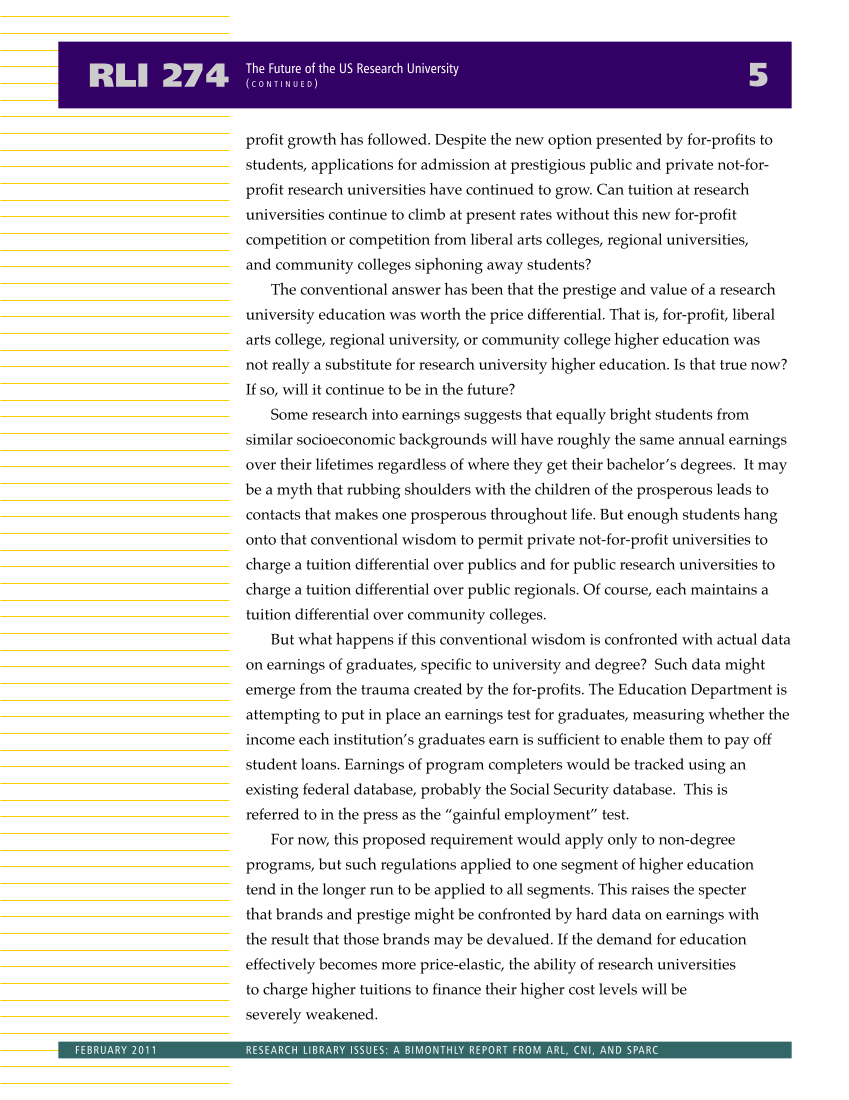profit growth has followed. Despite the new option presented by for-profits to students, applications for admission at prestigious public and private not-for- profit research universities have continued to grow. Can tuition at research universities continue to climb at present rates without this new for-profit competition or competition from liberal arts colleges, regional universities, and community colleges siphoning away students? The conventional answer has been that the prestige and value of a research university education was worth the price differential. That is, for-profit, liberal arts college, regional university, or community college higher education was not really a substitute for research university higher education. Is that true now? If so, will it continue to be in the future? Some research into earnings suggests that equally bright students from similar socioeconomic backgrounds will have roughly the same annual earnings over their lifetimes regardless of where they get their bachelor’s degrees. It may be a myth that rubbing shoulders with the children of the prosperous leads to contacts that makes one prosperous throughout life. But enough students hang onto that conventional wisdom to permit private not-for-profit universities to charge a tuition differential over publics and for public research universities to charge a tuition differential over public regionals. Of course, each maintains a tuition differential over community colleges. But what happens if this conventional wisdom is confronted with actual data on earnings of graduates, specific to university and degree? Such data might emerge from the trauma created by the for-profits. The Education Department is attempting to put in place an earnings test for graduates, measuring whether the income each institution’s graduates earn is sufficient to enable them to pay off student loans. Earnings of program completers would be tracked using an existing federal database, probably the Social Security database. This is referred to in the press as the “gainful employment” test. For now, this proposed requirement would apply only to non-degree programs, but such regulations applied to one segment of higher education tend in the longer run to be applied to all segments. This raises the specter that brands and prestige might be confronted by hard data on earnings with the result that those brands may be devalued. If the demand for education effectively becomes more price-elastic, the ability of research universities to charge higher tuitions to finance their higher cost levels will be severely weakened. RLI 274 5 The Future of the US Research University ( C O N T I N U E D ) FEBRUARY 2011 RESEARCH LIBRARY ISSUES: A BIMONTHLY REPORT FROM ARL, CNI, AND SPARC






















